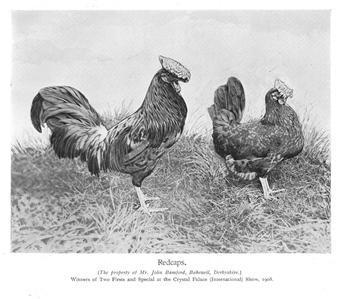Redcap,
Nice to see your progress with the Redcaps. The SPPA has had members that have worked on and with the Redcaps for several years now.
There are some things to keep in mind with your breeding program. I know you are excited and that is wonderful, but as the old man on Toy Store said, 'You can't rush ART!'
1. Redcaps like many other farm breeds were meant to be around for a while; not like the Leghorn of the factory farms. They were meant to have long productive lives. You can breed the pullets if you like, but truth be told you don't know who's going to lay the best or even which one is going to be alive in 5 or 6 years.
Back years ago when I started with Cubalayas there were only 4 or 5 real breeders in the whole of the USA. I wanted to pump out those birds as fast as I could. That's wehn I got a reality check from a lesson I learned from my great-grandfather (a cocker). I remember him telling me that he never bred from a bird (hen) that wasn't at least 2 years old. The reason? They had to 'prove' they could make it at least that long with absolutely NO ILLNESS. He never bred to a bird that had ever been sick. PERIOD. (sneezing every now and then doesn't count).
I made myself wait with my Cubalayas and I'm sure glad I did. While I started with around 10 or 15 pullets (I can't remember the exact number as it has been a long time ago); at the 2 year mark I was down to half that number for one reason or another.
My Cubalayas are long lived fowl that continue to lay into their 6th year and beyond; just like they are suppose too.
I would encourage you. To think about your overall goal. If it is truly what you have said, then this is not just about numbers. It's about quality.
2. There is more to a chicken than his/her comb and coloration. Craig Russell is fond of saying, 'You have to build the barn before you paint it.' I realize that with a Redcap you want a nice big comb, but not at the expense of the rest of the bird. Overall health and vigor should come first, then type, then color. Worry about color in about 4 or 5 generations: at the minimum.
3. I'd try to collect chicks from different hatcheries and breeders while you wait on these to mature to the age of two. By crossing the strains you'll increase the vigor thru something that approaches heterosis. You'll also increase the gene pool.
4. Only keep your best, but save one or two extras. You never know who's going to live. The philosophy I live by is: 'CHICKENS DIE.' Always have a spare.
I hope this helps you some.







